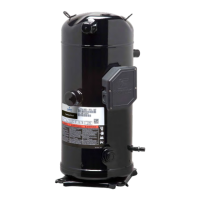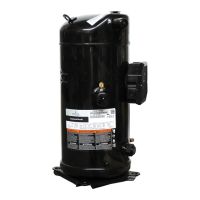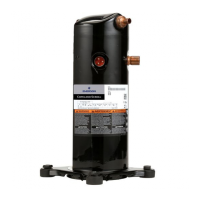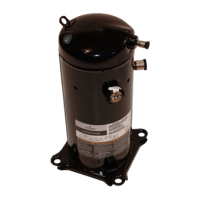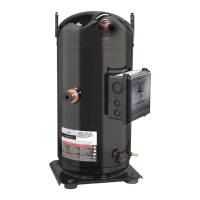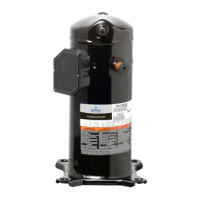AGL_HP_VS_YHV2P_E_Rev0 35
The Scroll
compressor does
not run, instead a
buzz sound can be
heard
Internal
compressor
mechanical
damage
▪ Acid formation: Acid forms in the presence of
moisture, oxygen, metal, salts, metal oxides and/or
high discharge temperatures. The chemical
reactions are accelerated at higher temperatures.
Oil and acid react with each other. Acid formation
leads to damage of the moving parts and in
extreme cases to motor burnout. Several different
test methods can be used to test for acid formation.
If acid is present a complete oil change (including
the oil in the oil separator) will help. A suction filter
which removes acid should also be fitted. Check
filter-drier condition.
The Scroll
compressor does
not run, no buzz
sound can be heard
Defective
system control
components
Check if the pressure control or thermostat works
properly or if the controls are open.
Check the fuse for a tripped circuit breaker or for an
open disconnected switch.
▪ If motor burned due to undersized contactors, you
will observe that the contacts welded together.
Complete motor burnout on all three phases
despite the presence of a functioning protection
system can be the result. For sizing information
please consult with Contactor manufacturer data
sheet. If the application of the compressor is
changed the contactor sizing should be rechecked.
▪ Check for unbalanced voltage.
High discharge
pressure /
suction
pressure
▪ For high discharge pressure:
- Check for system leaks.
- Check the system design. Make sure the
discharge line is correctly sized: undersized
discharge line can increase discharge
pressure. This is also true for an undersized
condenser. Correct the component selection as
needed.
- Check the fan motor, make sure it is running
properly in the right direction. Check the
condenser: if dirt has been accumulated it will
clog the airflow; clean as necessary. High
discharge pressure is also caused by an
overcharged system and high ambient
temperature surrounding the condenser.
▪ For high suction pressure, check the “evaporator
superheat” first to diagnose the problem:
- High superheat at the evaporator outlet: this is
likely in case of excessive pressure-drop in the
liquid line or too much vertical lift on the pipe
work.
▪ Low superheat at the evaporator outlet is
characterized by oversized selection of the
expansion valve or incorrect bulb sensor mounting.
The valve may freeze up in the open position due to
accumulation of debris in the system. For a system
with very short refrigeration lines an accumulator is
recommended.
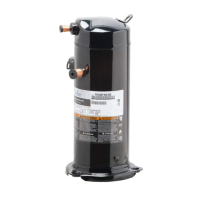
